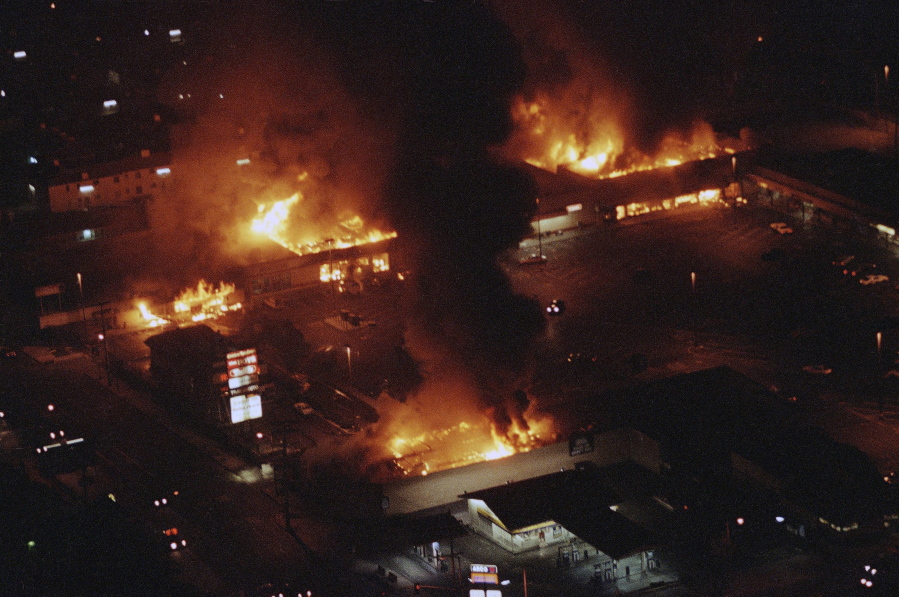LOS ANGELES — When an angry mob erupted in violence across Los Angeles 25 years ago this week, two names were commonly invoked by those in the streets.
One is well-known: Rodney G. King, the black man beaten by a group of baton-wielding police officers whose acquittal in a Simi Valley courtroom sparked the riots on April 29, 1992.
King survived his 1991 beating. Latasha Harlins, the other person invoked by looters, did not survive her injuries.
Harlins, a 15-year-old black girl, was shot in the head by a South Korean-born shopkeeper. A jury convicted the shopkeeper of manslaughter, but a judge imposed a light sentence without prison time, fueling rage and racial tension in the city.
On Monday, as the April 29 anniversary of the 1992 riots approaches, residents and community activists gathered at Florence and Normandie avenues, the notorious South L.A. intersection that was ground zero of the unrest, to commemorate King, Harlins and the 54 people who died in the riots.
The event was the first in a week recalling the riots, which left about 2,000 people injured and $1 billion in property damage across the city.
“Rodney King and Latasha Harlins and many social ills that was going on at the time brought April 29, 1992, about,” said Denise Harlins, Latasha’s aunt.
“We are here for all the victims,” said Najee Ali, the vigil’s organizer. “We are here today to say you are not forgotten.”
But the memory of the riots remains a point of division. Some recall when columns of smoke filled the sky during days of insurgent anarchy and a breakdown of order.
Others eschew the term “riot” and call it an uprising or rebellion, emphasizing the deep sense of injustice that powered a raging and destructive mob.
For many, King embodied that sense of injustice, particularly at the hands of law enforcement.
On the night of March 3, 1991, King had been drinking when officers pulled him over on a dark stretch of Foothill Boulevard in Lake View Terrace. He was acting erratically when he stepped out of the car.
A group of L.A. Police Department officers surrounded him, shot him with Tasers and struck him more than 50 times with solid aluminum batons.
Four officers — all white — stood trial for the beating. After seven days of deliberations in a Ventura County courthouse, a jury with no black jurors acquitted them all. Shortly afterward, the anger over the verdict spilled into the streets, as throngs set fire to entire blocks and stormed police buildings.
At Florence and Normandie, a white truck driver, Reginald Denny, was grabbed out of his vehicle and bashed by four black assailants with a brick and other objects. His beating was documented by helicopter news crews overhead — footage that would later help secure convictions in the case.
Denny survived his beating and like King and Harlins, became another symbol of the massive upheaval in L.A.



